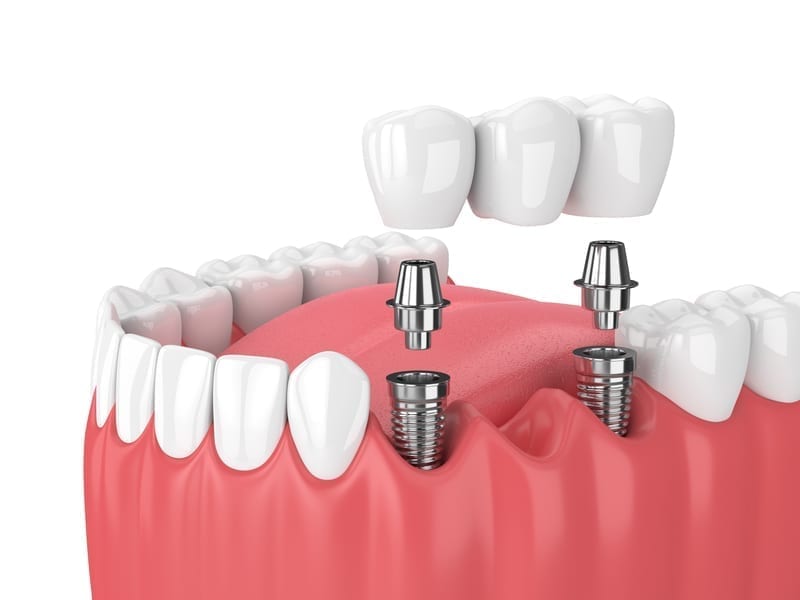Losing a tooth is an unfortunate situation for an adult; it can occur from a physical accident, an illness or disease, or from genetics. The one common denominator in adults with missing teeth is that they generally can be treated the same way and that is through the implementation of dental bridges.
Why You May Need Dental Bridges:
Losing a tooth affects the condition of your mouth and jaw more than you may ever expect. A missing tooth can change the composition of your mouth and if left untreated can contribute to oral concerns. One of those concerns is your bite; a missing tooth can affect the way your mouth closes when you eat, talk and even smile. Cosmetically, the jaw bone that once supported your tooth can begin to deteriorate which can make your face look like it’s drooping or sagging. Other common concerns with losing teeth can be a difficulty forming words an increase in headaches or migraines.
Variety of Bridges:
Modern technology has made replacing a missing tooth safer and more comfortable than ever before. The most common form of this is the traditional dental bridge which is utilized in patients that have their original teeth surrounding the gap of their lost tooth which are secured in your mouth by dental crowns. If you do not have your original teeth surrounding a gap, or if you have one natural tooth you may qualify for dental bridges known as Cantilever Bridges. Cantilever bridges are secured into your mouth by removing the enamel on the original tooth. Depending on your condition, the dentist will analyze your missing tooth and provide alternative dental recommendations specifically for you.
The Procedure:
The Dental Bridge procedure is a very common routine for dentists to perform but it will take several hours to complete. The pain levels through the procedure should be virtually non-existent due to the administration of local anesthetic. Since the dental bridge process will require your mouth to be ajar for a few hours, you may immediately feel a soreness in your jaw or neck however ibuprofen or acetaminophen should quell your pain adequately.
Recovery:
Dental bridge procedures typically do not require an extended recovery time; in fact, most patients can talk, smile and eat with little to-no-pain following the procedure. Occasionally, patients will complain that their dental bridge feels out-of-place or uncomfortable and that may be a result of a rugged spot on the bridge which can be easily modified by a dental alteration.
Maintaining the Dental Bridge
After your bridge has been implemented, with proper care and attentiveness, it should last you up to 10 years in excellent condition. Be sure to floss and brush at least twice a day or after meals. It is important to note that the condition of your bridge is dependent on how well you care for your original teeth. Be sure that you refrain from an overindulgence of sugary drinks and foods and try to maintain a healthy diet consisting of veggies and fruits.
For information on your current condition, contact High Prairie & Area Dental Centre in High Prairie, Alberta, today!


